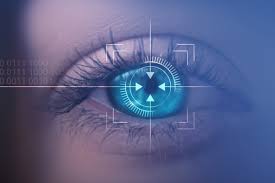
Breaking News
 NEW: Elon Musk Delivers Stunning Remarks At Historic UK March (Tommy Robinson)
NEW: Elon Musk Delivers Stunning Remarks At Historic UK March (Tommy Robinson)
 Donald Trump blames huge 'barrier' for stopping America from healing after Charlie Kirk'
Donald Trump blames huge 'barrier' for stopping America from healing after Charlie Kirk'
 White House Plans Security Boost On Civil Terrorism Fears...
White House Plans Security Boost On Civil Terrorism Fears...
 Office Depot Fires Worker Who Refused To Print Charlie Kirk Vigil Poster
Office Depot Fires Worker Who Refused To Print Charlie Kirk Vigil Poster
Top Tech News
 Tesla Megapack Keynote LIVE - TESLA is Making Transformers !!
Tesla Megapack Keynote LIVE - TESLA is Making Transformers !!
 Methylene chloride (CH2Cl?) and acetone (C?H?O) create a powerful paint remover...
Methylene chloride (CH2Cl?) and acetone (C?H?O) create a powerful paint remover...
 Engineer Builds His Own X-Ray After Hospital Charges Him $69K
Engineer Builds His Own X-Ray After Hospital Charges Him $69K
 Researchers create 2D nanomaterials with up to nine metals for extreme conditions
Researchers create 2D nanomaterials with up to nine metals for extreme conditions
 The Evolution of Electric Motors: From Bulky to Lightweight, Efficient Powerhouses
The Evolution of Electric Motors: From Bulky to Lightweight, Efficient Powerhouses
 3D-Printing 'Glue Gun' Can Repair Bone Fractures During Surgery Filling-in the Gaps Around..
3D-Printing 'Glue Gun' Can Repair Bone Fractures During Surgery Filling-in the Gaps Around..
 Kevlar-like EV battery material dissolves after use to recycle itself
Kevlar-like EV battery material dissolves after use to recycle itself
 Laser connects plane and satellite in breakthrough air-to-space link
Laser connects plane and satellite in breakthrough air-to-space link
 Lucid Motors' World-Leading Electric Powertrain Breakdown with Emad Dlala and Eric Bach
Lucid Motors' World-Leading Electric Powertrain Breakdown with Emad Dlala and Eric Bach
 Murder, UFOs & Antigravity Tech -- What's Really Happening at Huntsville, Alabama's Space Po
Murder, UFOs & Antigravity Tech -- What's Really Happening at Huntsville, Alabama's Space Po
Biohybrid artificial retina aims to restore vision using living cells

Now, researchers have created a new potential treatment for the currently incurable disease – a biohybrid artificial retina, made of silk and loaded with new human cells that can integrate and repair the damage.
AMD is a common cause of blindness among older people, where sight begins to blur in the center of the visual field. Currently there's no way to restore vision once it's lost, but there are treatments to slow down the progression of symptoms, and there are more experimental solutions, such as artificial retinas, bionic eye transplants and gene therapy, in development.
And now, Spanish scientists have developed a new type of artificial retina that could mesh more easily with the human eye. The device is made up of several layers of retinal cells, held together with silk fibroin films and encased in a protective gel. Ultimately, the idea would be to surgically implant these devices into the eyes of AMD patients to restore their vision.



